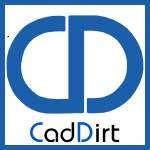SolidWorks:HEARD! - Episode 447 - Managing CAD Data
/Managing CAD Data:
This podcast covers the chore of managing CAD data since it comes with the overhead of references. File references, as most of us know, come with a number of challenges in management as well as in process activities. Topics covered:
- Common challenges with keeping up with CAD data
- Definitions of features related to CAD data
- Understanding SolidWorks' reference search algorithm
- Tools to assist in references management
- Common methods without PDM
- Alternative management tools
- What PDM can bring to the mix
After 12 years of consulting and implementing PDM and dealing with managing CAD data, there are some common pitfalls that seems to resonate with me. In this show I hope to echo these common pitfalls and give some insight to ways to alleviate these issues.
If you have ever been faced with the "Would you like to find these references" message when opening up an assembly in SolidWorks message, you will be interested in the number of steps SolidWorks actually goes through before asking you for assistance. I think you might be surprised.
I thought this was a great topic since I have spent the last 2 weeks dealing with issues related to file references that stemmed from bad practices. SolidWorks provides a number of tools (non-PDM) that can give you a head start with managing CAD file references that can get out of hand in a hurry. ~Lou
Check out the SolidWorks:Heard! Blog and follow us on Google+, Twitter and Facebook.



